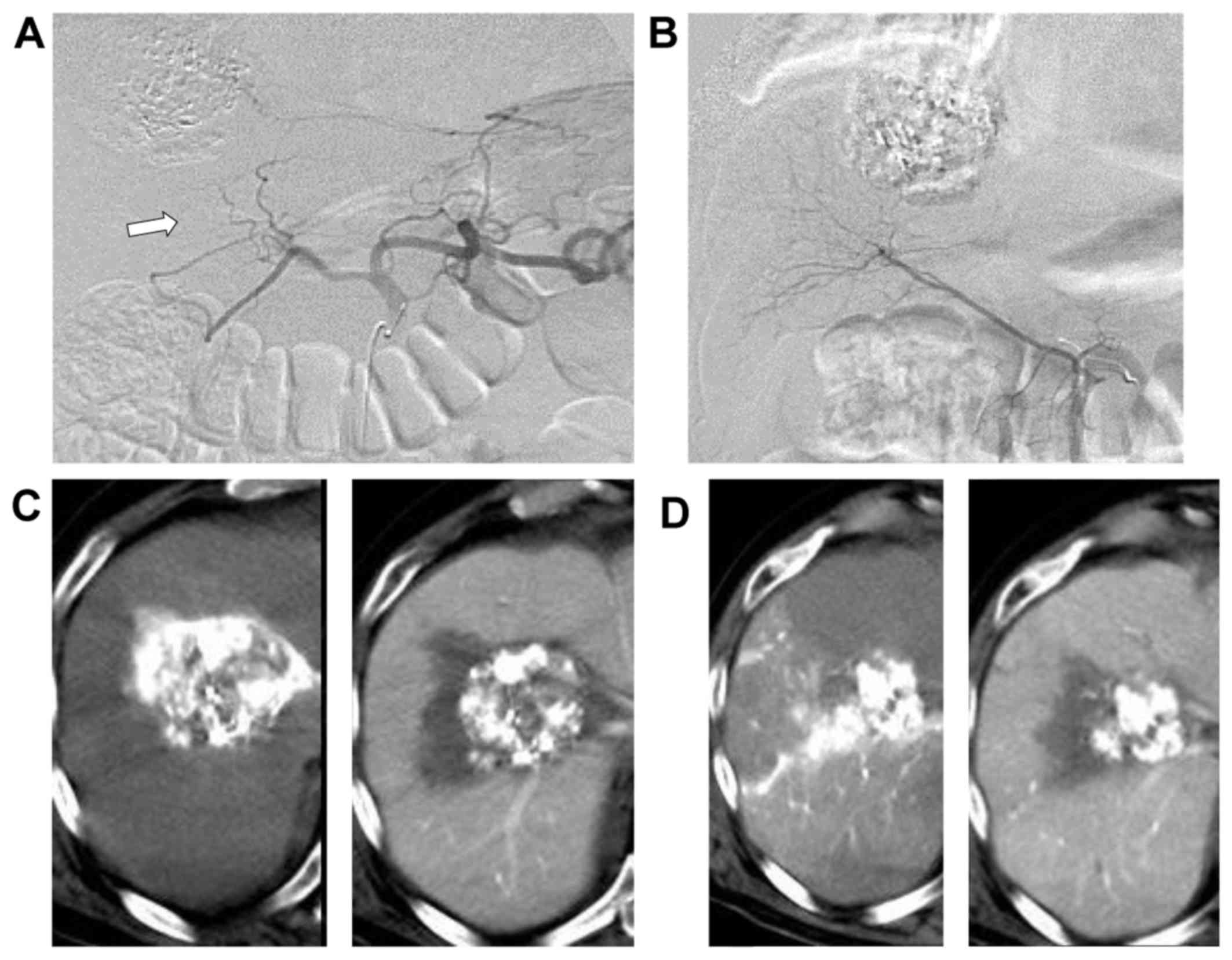Acute necrotizing pancreatitis as a fatal complication following DC Bead transcatheter arterial chemoembolization for hepatocellular carcinoma: A case report and review of the literature
- Authors:
- Published online on: August 2, 2018 https://doi.org/10.3892/mco.2018.1690
- Pages: 403-407
Metrics:
Total
Views: 0 (Spandidos Publications: | PMC Statistics:
)
Total PDF Downloads: 0 (Spandidos Publications: | PMC Statistics:
)
Abstract
Transcatheter arterial chemoembolization (TACE) is one of the most effective palliative measures for patients with inoperable hepatocellular carcinoma (HCC). Acute pancreatitis is a rare but well-known complication following TACE. We herein present the case of a patient with HCC who developed fatal complications (acute necrotizing pancreatitis and upper gastrointestinal ulcers) after TACE with DC Beads. The patient was diagnosed with HCC in segments 4 and 8, measuring ~70 mm in greatest diameter, and he was treated by TACE. Hepatic arteriography revealed replacement of the origin of the right hepatic artery to the superior mesenteric artery, while the left hepatic artery originated from the celiac artery. After selection of the segmental arterial branches feeding the tumor, 2 ml of 100-300-µm-sized DC Beads loaded with 150 mg epirubicin were injected through the microcatheter. The patient complained of abdominal pain after the TACE procedure. Upper gastrointestinal endoscopy revealed longitudinal ulcers from the esophagus to the duodenum, and contrast-enhanced computed tomography revealed swelling of the pancreas and focal areas of low density in the pancreatic body, suggesting necrosis. The patient developed respiratory insufficiency, renal failure and sepsis, and finally succumbed to the complications 54 days after the procedure, despite general management of the acute pancreatitis. An autopsy revealed that the main cause of the patient's death was extensive pancreatic necrosis due to a gastroduodenal artery embolism after TACE with DC Beads. Therefore, it is crucial for treating physicians to be aware of this complication following TACE with DC Beads, particularly in patients with anatomical variations.













